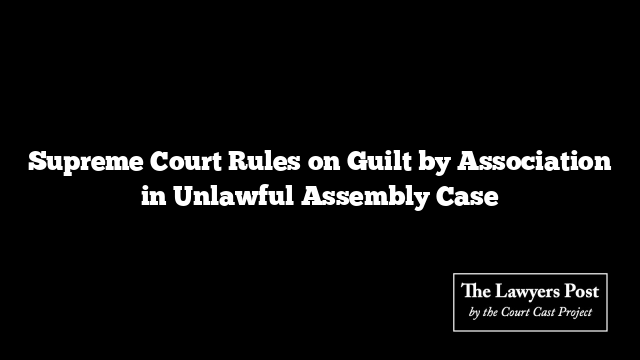The Supreme Court has upheld the conviction of an individual implicated in a murder case, affirming that mere presence in an unlawful assembly is enough to be convicted, regardless of whether the accused directly inflicted injury. This ruling followed an appeal from a man convicted by the Allahabad High Court for his involvement in a 1997 murder case.
The defendant argued that while he carried a country-made pistol to the crime scene, he did not directly harm the victim, as his gunfire was intended to scare, not injure. However, the Court dismissed this defense, stating that under Section 149 of the Indian Penal Code (IPC), if an individual is part of an assembly with a common criminal intent, they can be held responsible for any crime committed by other members of the group, even if they did not personally commit the act.
In this particular case, the accused was among those involved in an armed assault on Satya Narain, stemming from a familial dispute over property inheritance. The court found the presence of two of Narain’s sons at the scene as key eyewitnesses, corroborating the prosecution’s claim.
Despite arguments about gaps in the investigation—such as the failure to recover the pistol or the non-examination of important witnesses—the Supreme Court concluded that the defendant’s presence and role in aiding the escape of other attackers was enough to confirm his guilt under Section 149 IPC.
By reaffirming that the focus lies on an individual’s involvement in an unlawful assembly rather than direct action, this ruling clarifies the extent of collective liability under Indian law.





